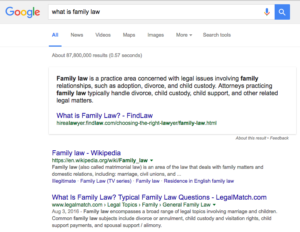 Over the last year, the best SEO strategies have become less about specific keywords and more about their relationship with user experience. In this post, we’ll examine a few of the major ways to ensure your SEO and user experience are ready for the new year.
Over the last year, the best SEO strategies have become less about specific keywords and more about their relationship with user experience. In this post, we’ll examine a few of the major ways to ensure your SEO and user experience are ready for the new year.
Keyword Strategy vs. Conversation
You probably know this because you do it yourself, but most users these days search using questions and full phrases. For example, a user is much more likely to type something like “do I need a lawyer after a Bay area car accident?” than “San Francisco auto accident attorney.” For this reason, it makes more sense to have content on your website and social media profiles that matches the natural flow of common language. We’ve steadily been moving away from traditional, corporate copywriting in favor of more conversational tones.
Note: Keywords are still important! Though your content should be conversational in nature, you still want to include your best performing keywords when they naturally fit within the context of your content.
Consider Including Schema Markups

Cross-Channel Your Marketing Efforts
Cross-channeling simply means presenting a consistent message across your various marketing platforms and using them to keep users coming back. For example, you can include calls-to-action (CTAs) on your website urging visitors to view more content on your Facebook page and vice versa. This is also where ad campaigns and targeting come in. If a user visits your website, you can set it up so that they’ll see your Facebook ads next time they comb the social media site. The idea is to get the most bang for your buck by turning one interaction with a user into many more in the future.
Give Your Users What They Want
The simplest and most important thing to remember when creating content for your clients is to listen and deliver. What questions do you or your receptionist hear over and over again? Put the answers in obvious and intuitive places on your website and/or social media channel. Are your clients confused about your billing process? Consider adding this information to your FAQ page. Do they continually ask for your email address? Slap that in your footer. The best SEO is relevant content that satisfies your users’ basic needs.





